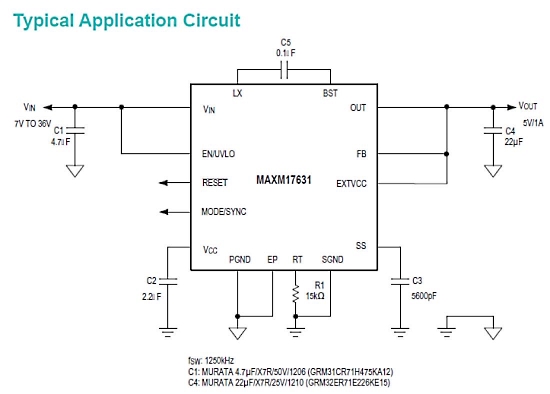Welcome to the latest “EYE on NPI” with Maxim’s Himalaya uSLIC Step-Down Power Module (video) – purchase them from Digi-Key.
What is EYE on NPI? The acronym NPI stands for New Product Introduction and sometimes you’ll also see NPD (New Product Development). EYE on NPI will showcase, spotlight, and discuss the latest new products and announcements from the entire component industry. EYE on NPI will help engineers go from prototype to market and get important information on pricing and availability. The more you know, the more you can reduce time-to-market, the more you increase the quality of the product(s) and reduce production costs!
Adafruit releases dozens of new products per month. We live, eat, and breathe datasheets and we wanted to share our NPI process with everyone: how we get to market quickly, and what the latest NPIs are out there.

We’re always on the lookout for new techniques and parts for power supplies and management – so this week’s EYE on NPI takes a look at some MAXIM integrated buck converter chip/mini-modules, which they call the Himalaya uSLIC™ Step-Down Power Module set. These tiny and easy-to-use modules take 4.5-36V DC in and give you 0.9V-12V adjustable output at 1 Amp with no fuss.
Maxim:
“The Himalaya series of voltage regulator ICs and Power Modules enable cooler, smaller and simpler power supply solutions. Easy-to-use, step-down power module that combines a switching power supply controller, dual n-channel MOSFET power switches, fully shielded inductor, and the compensation components in a low-profile, thermally-efficient, system-in-package (SiP).”
Power supplies are the silent workhorses of electronics design – they take the abuse of over/under voltages, short circuits, noisy and unstable inputs and do all that clean up for you so you’ve got clean regulated power. They’re not glamorous, but a good power supply setup will make the rest of your design a breeze. Bad power supplies will give you very confusing results – flaky wireless, bad sensor readings, brownouts, or worse – damaged components!
We’ve seen some of these ‘all in one’ integrated buck converters before, they’re sometimes even sold as pin-compatible ‘LM7805’ replacements. In particular we’re seeing these pop up on small development, wearables or eval boards – partially because they’re so small and also because they’re incredibly easy to use. You only need half-a-dozen passives to get the MAXM17632 going, even less for the fixed-output MAXM17630 and MAXM17631.

No inductors, MOSFETs, compensation path – everything’s internal. A few external ceramic capacitors and resistors are all you need. It even comes with some nice extras like an under-voltage lockout, adjustable switching frequency (400KHz – 2.2MHz) and a power-good/reset output that can keep your system from booting up during start-up when the voltage is unstable.
These modules are tuned and efficient, especially since every component is tightly integrated, so you will reduce thermal emissions as well. Check out this nifty thermal camera live demo video by Maxim.
We picked these parts because we have encountered projects where the power supply needs to be super small, super efficient, reliable and the additional cost of an external module did not affect the BoM.

To get the latest NPI on the socialz’ follow:
Previous EYE on NPIs:

EYE on NPI – Espressif ESP32-S2 SoC.